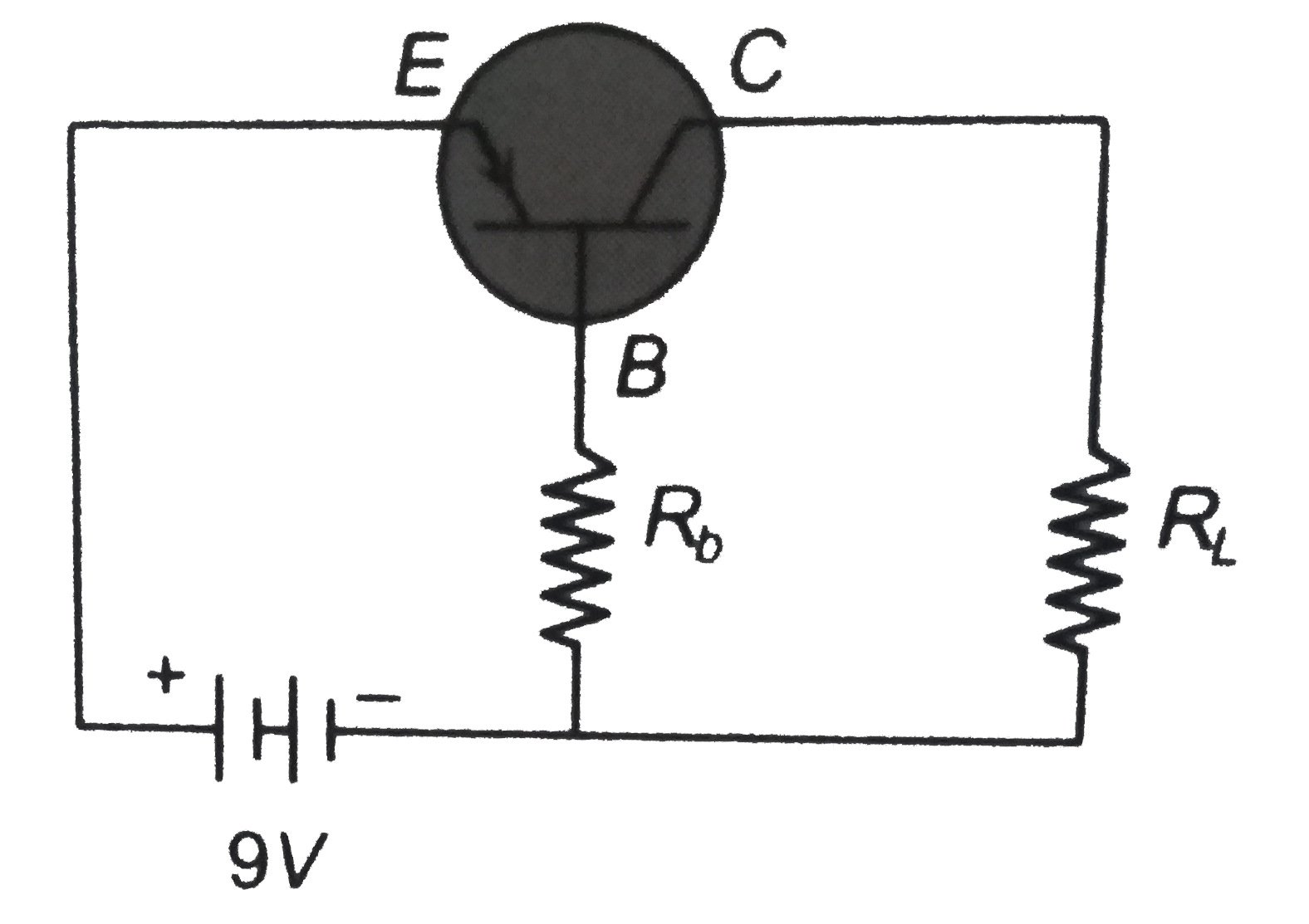In a transistor circuit the base current changes from 30 μA to 90μA.If the current gain of the transistor is 30 ,find the change in the collector current.
To solve the problem step by step, we will follow the information given in the question and apply the relevant formulas.
Step 1: Identify the given values
- Initial base current (Ib_initial) = 30 µA
- Final base current (Ib_final) = 90 µA
- Current gain (β) = 30
Step 2: Calculate the change in base current (ΔIb)
The change in base current can be calculated using the formula:
ΔIb=Ibfinal−Ibinitial
Substituting the values:
ΔIb=90μA−30μA=60μA
Step 3: Use the current gain to find the change in collector current (ΔIc)
The relationship between the change in collector current and the change in base current is given by:
ΔIc=β×ΔIb
Substituting the values:
ΔIc=30×60μA
Step 4: Calculate the change in collector current
Calculating the above expression:
ΔIc=30×60μA=1800μA
Since 1mA=1000μA, we can convert this to milliampere:
ΔIc=1800μA=1.8mA
Final Answer
The change in the collector current is 1.8 mA.
---
- Initial base current (Ib_initial) = 30 µA
- Final base current (Ib_final) = 90 µA
- Current gain (β) = 30
The change in base current can be calculated using the formula:
ΔIb=Ibfinal−Ibinitial
Substituting the values:
ΔIb=90μA−30μA=60μA
The relationship between the change in collector current and the change in base current is given by:
ΔIc=β×ΔIb
Substituting the values:
ΔIc=30×60μA
Calculating the above expression:
ΔIc=30×60μA=1800μA
Since 1mA=1000μA, we can convert this to milliampere:
ΔIc=1800μA=1.8mA
The change in the collector current is 1.8 mA.
Topper's Solved these Questions
- SEMICONDUCTOR DEVICESBOOK - AAKASH SERIESCHAPTER - SEMICONDUCTOR DEVICESEXERCISE - Problems (LEVEL-II)
9 Videos
- SEMICONDUCTOR DEVICESBOOK - AAKASH SERIESCHAPTER - SEMICONDUCTOR DEVICESEXERCISE - EXAMPLES
56 Videos
- SEMICONDUCTOR DEVICESBOOK - AAKASH SERIESCHAPTER - SEMICONDUCTOR DEVICESEXERCISE - Exercise (very Short answer questions)
36 Videos
- RAY OPTICSBOOK - AAKASH SERIESCHAPTER - RAY OPTICSEXERCISE - PROBLEMS ( LEVEL-II)
60 Videos
- UNITS AND MEASUREMENTBOOK - AAKASH SERIESCHAPTER - UNITS AND MEASUREMENTEXERCISE - PRACTICE EXERCISE
45 Videos
Similar Questions
In a common emitter transistor circuit, the base current is 40μA , then VBE is
View SolutionIn a transistor circuit shown here the base current is 35μA. The value of the resistor Rb is

View SolutionThe frequency of oscillation of current in the indcutor is

View SolutionIn a transistor circuit, when the base current is increased by 50μAkeeping the collector voltage fixed at 2 V. the collector current increases by 1 mA The current gain of the transistor is
View SolutionConsider an n−p−n transistor amplifer in common-emitter configuration. The current gain of the transistor is 100. If the collector current changes by 1mA, what will be the change in emitter current?
View Solution
(a) For given transistor circuit, the base current is 10μA and the collector current is 5.2 mA. Can this transistor circuit be used as an amplifier. Your answer must be supported with proper explanation.
(b). For a common emitter amplifier, current gain is 69. if the emitter current is 7 mA then calculate the base current and collector current.
View SolutionIn a transistor, the current amplification factor α is 0.9. The transistor is connected in common base configuration. The change in collector current when base current changes by 4 mA is
View SolutionIn a common base transistor circuit, IC is the Output current and IE is the input current. The current gain α is
View SolutionIn a n-p-n transistor circuit, the collector current is 10 mA. If 80 percent of electrons emitted reach to the collector. Then the base current (in mA) will be
View SolutionIn a common base transistor circuit, the current gain is 0.98. On changing the emitter current by 1 mA, the change in collector current is
View Solution
